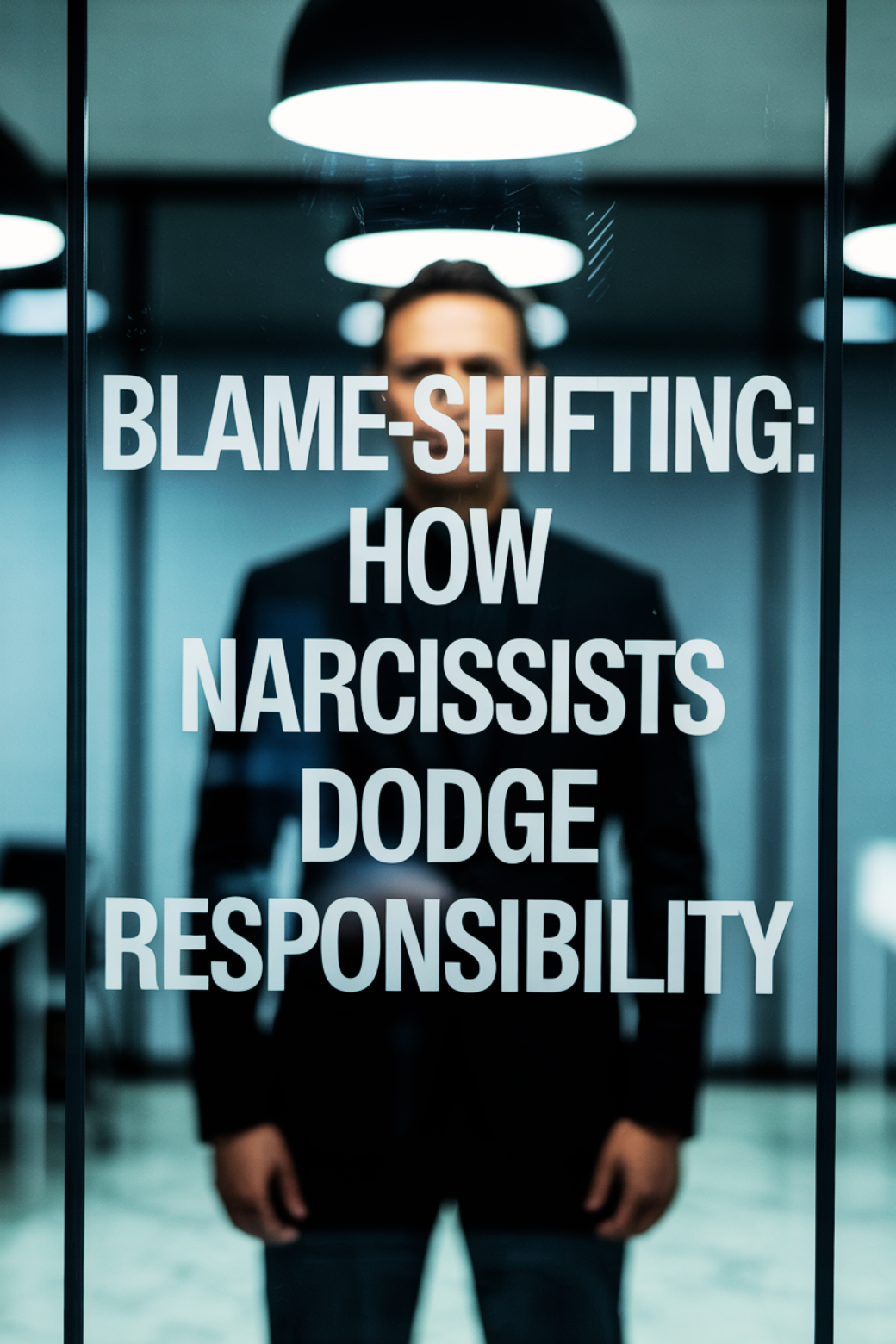Now Reading: Blame-Shifting: How Narcissists Dodge Responsibility (And How to Stop Taking the Fall)
- 01
Blame-Shifting: How Narcissists Dodge Responsibility (And How to Stop Taking the Fall)

Blame-Shifting: How Narcissists Dodge Responsibility (And How to Stop Taking the Fall)
Abuse No MoreNarcissistic TacticsJune 12, 2025
- Home
- Narcissistic Tactics
- Blame-Shifting: How Narcissists Dodge Responsibility (And How to Stop Taking the Fall)
Ever Been Blamed for Something That Wasn’t Your Fault? That’s Blame-Shifting.
You confront them about something they did wrong. Instead of owning up to it, they turn it back on you.
Maybe you’ve heard:
❌ “If you hadn’t made me mad, I wouldn’t have yelled.”
❌ “You’re just too sensitive. That’s why this is an issue.”
❌ “I wouldn’t have cheated if you were a better partner.”
❌ “You’re always trying to make me the bad guy.”
And suddenly, you’re the one on trial.
That’s blame-shifting—a manipulation tactic used to dodge accountability and pin the fault on you instead. It’s not just an argument strategy—it’s a deliberate way to keep you doubting yourself while they avoid consequences.
If you’ve ever walked away from a conversation thinking, “Wait… was that actually my fault?” when deep down, you know it wasn’t—you’ve been blame-shifted.
Let’s break down why they do it, how it works, and how to shut it down using the IMC Method™.
What Is Blame-Shifting? (And Why Narcissists Use It)
Blame-shifting is a deflection tactic designed to:
✅ Make you feel guilty so they don’t have to take responsibility.
✅ Avoid consequences for their own bad behavior.
✅ Keep you focused on defending yourself instead of holding them accountable.
It works because it plays on your sense of fairness and self-doubt. Instead of discussing what THEY did wrong, you find yourself:
❓ Apologizing for things you didn’t do.
❓ Justifying why you reacted the way you did.
❓ Explaining your actions while they sit back and let you take the heat.
🔥 Blame-shifting isn’t about truth—it’s about control. 🔥
How Blame-Shifting Works (And Why It’s So Toxic)
Narcissists use blame-shifting in different ways, but the goal is always the same: make you question yourself so they can avoid accountability.
Blame-Shifting in Action: The Narcissist’s Playbook
🔹 Flipping the Script – “I wouldn’t have said that if you didn’t push me.”
🔹 Playing the Victim – “You’re attacking me right now. Why are you so mean?”
🔹 Twisting Reality – “You started this fight, not me.”
🔹 Minimizing Their Actions – “I was just joking. You’re overreacting.”
🔹 Exaggerating Yours – “You’re being dramatic. This isn’t a big deal.”
🔹 Projecting – “You’re the one who’s always blaming ME.”
Over time, this makes you:
⚠️ Doubt your memory and judgment.
⚠️ Take responsibility for things that aren’t your fault.
⚠️ Feel guilty for even bringing up concerns.
And THAT is exactly what they want—to keep you on the defensive so they never have to be.
🔥 Blame-shifting isn’t just unfair—it’s emotional abuse. 🔥
How to Respond to Blame-Shifting (IMC Method™)
You don’t argue with a blame-shifter. Why? Because they aren’t looking for the truth—they’re looking to win.
Instead, you use the IMC Method™ (Identify, Minimize, Control) to stop taking the blame and put the responsibility back where it belongs.
1. IDENTIFY: Call Out the Manipulation
The first step is recognizing blame-shifting as it happens.
✅ Separate facts from manipulation. What actually happened vs. what they’re twisting?
✅ Listen for deflection. Are they answering your concern—or just shifting blame?
✅ Trust yourself. If it wasn’t your fault, don’t let them convince you it was.
💡 Example: If they say, “If you hadn’t made me mad, I wouldn’t have yelled,” respond with:
✔️ “You’re responsible for your own actions. I didn’t make you yell.”
🔥 Why It Works: You hold them accountable instead of defending yourself.
2. MINIMIZE: Cut Off Their Power Over You
Blame-shifting only works if you engage with it. The more you justify, explain, or apologize, the more they shift the focus onto YOU.
✅ Don’t take the bait. You don’t have to prove you’re not at fault.
✅ Refuse to get defensive. Their goal is to distract you from what THEY did.
✅ Stay calm. The less you react emotionally, the less power they have.
💡 Example: If they say, “You’re making a big deal out of nothing,” respond with:
✔️ “That’s your opinion, but this is important to me.”
🔥 Why It Works: You hold your ground without getting pulled into their trap.
3. CONTROL: Reclaim Your Confidence & Boundaries
Blame-shifters want you to doubt yourself. The more confident you are, the less effective their tactic becomes.
✅ Own your truth. If you know what happened, stick to it.
✅ Refuse to take responsibility for their actions. You are not their scapegoat.
✅ End the conversation if necessary. You don’t have to keep engaging.
💡 Example: If they say, “You always blame me for everything,” respond with:
✔️ “This isn’t about blame. It’s about accountability.”
🔥 Why It Works: You shift the focus back to the real issue.
What Happens When You Stop Playing Their Game?
When you stop reacting to blame-shifting, the manipulator loses control.
They might:
⚠️ Try harder to make you feel guilty.
⚠️ Get angry or defensive.
⚠️ Play the victim and act like YOU’RE the problem.
Stay strong. Their reaction is proof that your new boundaries are working.
The more you hold firm, the more their manipulation loses power.
You Are Not Their Scapegoat
Blame-shifting is designed to make you question yourself—but you don’t have to fall for it anymore.
✔️ You don’t have to prove you’re not at fault.
✔️ You don’t have to justify your feelings.
✔️ You don’t have to take responsibility for their behavior.
You are not their excuse.
You are not their scapegoat.
You are in control. Tired of the Narcissistic Mind Games? Get the Tools to Break Free.
















